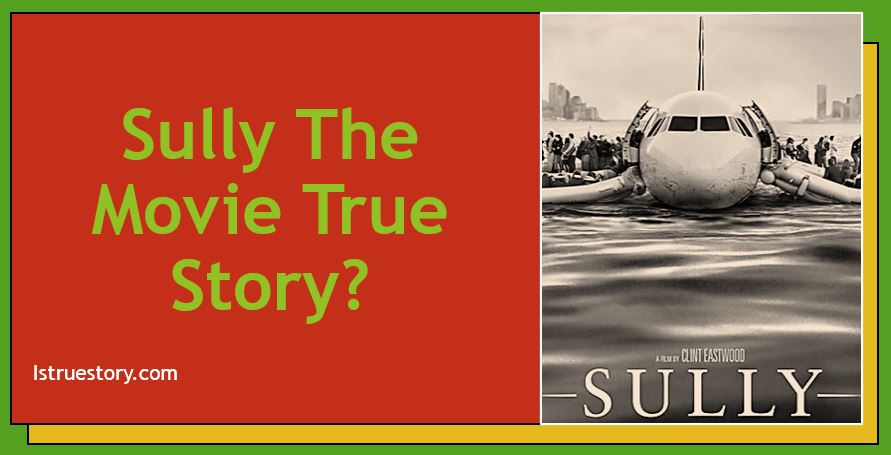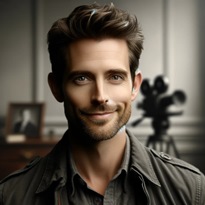
Let’s dive in.
Not just into the story but into the heart of what really happened, what was added for Hollywood, and what the real Captain Sully thinks about it all.
The Real Miracle on the Hudson
On January 15, 2009, US Airways Flight 1549 took off from New York’s LaGuardia Airport bound for Charlotte, North Carolina. Three minutes into the flight, disaster struck. A flock of Canadian geese collided with the Airbus A320’s engines, causing both to fail almost instantly.
With no power, limited altitude, and only seconds to act, Captain Sullenberger and First Officer Jeff Skiles made a life-or-death decision land on the Hudson River.
That decision saved all 155 people aboard.
The event was later dubbed “The Miracle on the Hudson.”
Not because it was luck but because of precision, teamwork, and calm under impossible pressure.
How True Was the Movie Sully?
Clint Eastwood directed Sully with his signature no-nonsense realism. The movie sticks closely to real events, especially the flight and emergency landing sequence. In fact, much of the cockpit dialogue was taken directly from flight recordings and verified transcripts.
Still, a few things were dramatized for storytelling impact:
- The NTSB Investigation – In the movie, investigators seem aggressive and skeptical, making Sully look like he’s on trial. In reality, the National Transportation Safety Board was far more professional. They weren’t out to “get” Sully they just had to analyze every possibility.
- Flashback Tension – Eastwood used dream sequences and flashbacks to show Sully’s guilt and doubt. Those scenes help audiences feel his emotional weight, but they’re artistic additions, not documented events.
- Timing and Pacing – The movie compresses time. The real investigation took months; the film shows it in days.
Despite these tweaks, aviation experts and even Sully himself say the film is remarkably accurate in spirit. It captures the intensity, teamwork, and humility of the real event better than anyone expected.
The Man Behind the Calm: Who Is Captain “Sully”?
Chesley Burnett Sullenberger III, known simply as “Sully,” was a former Air Force pilot before joining US Airways. His calm demeanor wasn’t luck it was decades of experience in crisis training.
He was 57 when Flight 1549 happened.
By that point, he’d logged over 20,000 flight hours and spent years teaching safety procedures. That experience made all the difference.
After the water landing, Sully became an instant national hero. But he didn’t bask in the glory. In his words:
“I don’t feel like a hero. I was just doing my job.”
That humility became a core part of both the man and the movie.
Did Sully Ever Fly Again?
Yes but not for long.
Captain Sullenberger returned to the cockpit briefly after the incident, mostly for check flights and training sessions. But by March 2010, he officially retired from US Airways.
Instead of chasing another flight, Sully took off in a different direction public speaking and aviation safety advocacy. He began working with airlines, government agencies, and educators to promote crisis management and pilot training reforms.
And that’s where another interesting fact comes in.
How Much Does Sully Sullenberger Charge to Speak?
If you’ve ever wondered what it costs to have a real-life hero speak at your event brace yourself.
Captain Sully’s speaking fee ranges between $50,000 to $100,000 per appearance, depending on the event’s size and location.
He’s been booked by companies, universities, and leadership conferences around the world. His topics include decision-making under pressure, leadership, and safety culture things he’s literally mastered in real life.
Sully isn’t just retelling the past.
He uses his story to inspire preparation, resilience, and professionalism in high-stress environments.
Did the Passengers of Flight 1549 Sue?
Surprisingly, no major lawsuits were filed against Sully, Skiles, or US Airways. Most passengers praised the crew for saving their lives.
However, a few passengers filed claims not out of anger, but to cover lost belongings or trauma-related expenses. These were handled quietly and never turned into public court battles.
The NTSB report officially credited the flight crew’s judgment and coordination as the key reason everyone survived.
In other words Sully didn’t just save lives; he made aviation history.
What Sully Thought of the Movie
When asked about Clint Eastwood’s adaptation, the real Sully said:
“It’s accurate, powerful, and emotional. I didn’t want to relive those days, but Clint and Tom portrayed it with deep respect.”
He did consult with Eastwood and Tom Hanks during production, helping them understand the mindset of a captain making impossible decisions in seconds.
And yes that famous line in the film’s climax, “Brace for impact,” was exactly what Sully said.
Tom Hanks later shared that he was nervous portraying such a respected living figure:
“You don’t play Sully. You try to honor him.”
That respect shows. The film’s tone isn’t flashy it’s disciplined, mirroring Sully’s real-life calm.
Behind the Cockpit: How Eastwood Recreated the Landing
The landing sequence in Sully is one of the most realistic aviation scenes ever filmed. Eastwood used:
- IMAX cameras inside a full-scale Airbus A320 mock-up
- CGI mixed with real river footage of the Hudson
- Consultation with the actual flight crew and investigators
The sound design the hum of failing engines, the rattling panels, the heartbeat-like silence before impact is chillingly authentic.
Even seasoned pilots said the movie made them tense up.
That’s how well-crafted it is.
The Real First Officer: Jeff Skiles
It’s easy to focus only on Sully, but his co-pilot Jeff Skiles was just as vital.
While Sully handled the glide path, Skiles managed the emergency checklist, communication, and timing.
Skiles later said that Eastwood’s film did a great job showing teamwork, but the real cockpit dynamic was even calmer than depicted.
Both pilots had trained for engine failure simulations just never one over Manhattan.
After the incident, Skiles continued flying for American Airlines and later became an aviation advocate, working with youth flying programs.
Why the “Trial” Scenes Still Matter
Even though the investigation drama in Sully was exaggerated, it serves a purpose.
Eastwood used it to explore a deeper question:
When a hero makes a split-second choice how do we judge it afterward?
It’s easy to analyze a perfect flight plan from behind a desk.
It’s a lot harder to make it happen in the sky with 155 lives depending on you.
That tension between human instinct and data-driven hindsight gives Sully its emotional punch.
It’s not just about a plane landing it’s about trust in human judgment.
Legacy of Flight 1549
The real impact of the Miracle on the Hudson goes far beyond headlines.
- New aviation training standards were developed, emphasizing dual engine failure scenarios.
- The NTSB began updating water-landing protocols for pilots.
- And Sully became a symbol of competence under pressure not just for pilots, but for anyone facing a moment of crisis.
The aircraft itself, Airbus A320 tail number N106US, was later moved to the Carolinas Aviation Museum in Charlotte, North Carolina.
Visitors can walk beneath its wings, see the damage, and imagine that January day when calm saved lives.
So, How True Was Sully the Movie?
In short about 95% true.
- The flight events: accurate
- The dialogue: based on real recordings
- The emotions: faithful to reality
- The NTSB tension: dramatized for effect
But when you watch Sully, you’re not just watching what happened you’re feeling what it meant.
That’s what Clint Eastwood got right.
A Hero’s Humanity
The best part of Sully isn’t the landing it’s what happens after.
The quiet, exhausted pilot sitting alone in his hotel room, questioning whether he did the right thing. That’s real. Not because Sully doubted his decision, but because real heroes aren’t superhuman they’re thoughtful, burdened, and deeply aware of the weight of their choices.
That’s the heart of the true story.
Final Takeaway
“Sully The Movie True Story” reminds us that ordinary people can rise to extraordinary challenges. It’s not about the splash on the Hudson it’s about preparation meeting courage.
Clint Eastwood turned a 208-second flight into a full-length emotional journey. And Tom Hanks turned a quiet man into a cinematic legend.
The real miracle?
It’s not that the plane landed safely.
It’s that 155 people walked away because one man and his crew stayed calm when the world froze.

I am Jeremy Jahns – Your Cinematic Explorer
Immerse in movie reviews, Hollywood insights, and behind-the-scenes stories.